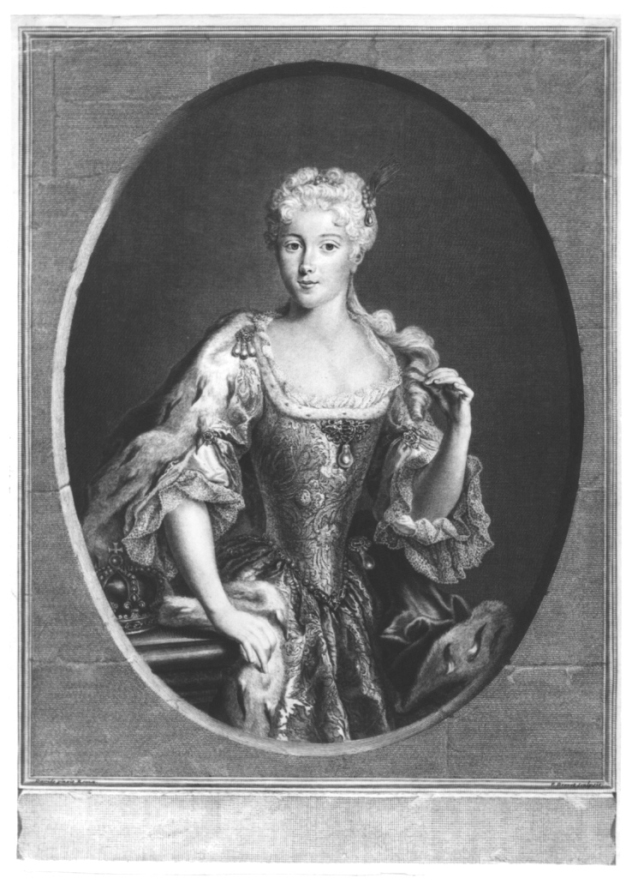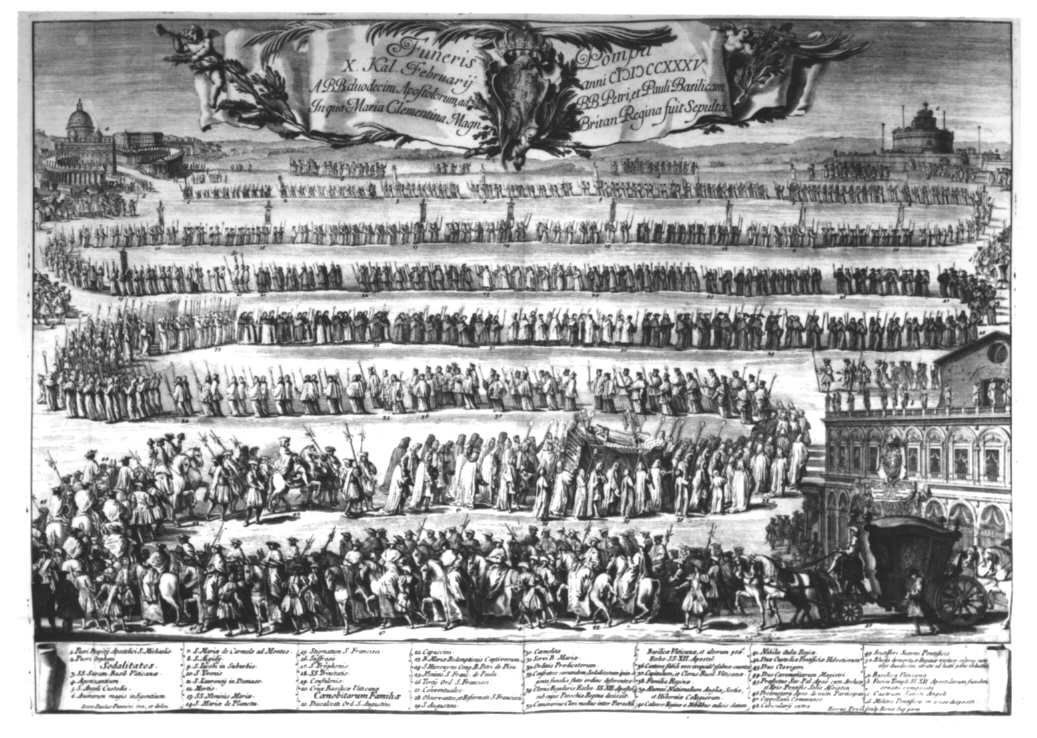Maria Klementyna (1701–1735) was the youngest daughter of Jakub Ludwik Sobieski, Duke of Oława, and a granddaughter of King Jan III Sobieski. She was the titular Queen of the United Kingdom of England, Scotland and Ireland. Her life and fate provide a heartbreaking illustration of divergence between daydreaming and reality. In the spring of 1719 young Klementyna, the then fiancée of James III Stuart, became famous throughout Europe due to her daring escape from the Ambras castle on the Inn River, which resulted in their longed-for marriage concluded in Bologna on 9 May. Princess Sobieska was dainty, well-shaped, with fair hair and dark eyes, sharp-witted, cheerful, well-educated and wealthy (she contributed an impressive dowry). Thus, she seemed a perfect marriage candidate for James, serious by nature and 14 years her senior, who went down in history as The Old Pretender. The couple settled in Rome, enjoying care and support of Pope Clement XI (Klementyna’s godfather). However, the fairytale proved short-lived mainly due to the spouses’ completely different temperaments. The common ground of mutual comprehension soon began to shrink and eventually led to the separation of the royal couple. Mother of two, Klementyna shunned ever more from her husband, sons and home. Losing touch with reality, she started practicing religious mediations in the Santa Cecilia convent and mortified herself implicitly, which resulted in extreme exhaustion of her body and consequently her premature death.
Extant are numerous painted and printed portraits of Maria Klementyna, most of which represent her at the height of her beauty that was gradually lost altogether. The effigies were en masse created abroad (chiefly in Rome) at relatively close intervals, between the date of the princess’s marriage (1719) and her death (1735). The oil portraits, probably commissioned by the Stuart court, were most frequently made by two artists active in Rome: cavaliere Francesco Trevisani called Romano (1656–1746) and Antonio David (before 1684–after 1735). David’s image of Klementyna was reproduced in copperplate by Pierre-Imbert Drevet (1697–1739), an excellent French engraver and author of the most beautiful of all of Sobieska’s printed representations. The fair-haired, slender girl in a low-cut patterned dress, decorated at neckline with a great gem-studded brooch, is with her left hand freely brushing off a long curl falling onto her shoulder. Turning her face with expressive eyes and a faint smile towards the viewer, the model is resting her right hand on a fragmentarily visible base (or table) bearing a royal crown. An ermine coat is falling off her shoulders. The portrait of the (still) happy Sobieska exudes freshness, freedom and elegance. The discussed print, masterly executed, was made in 1723–1730 and is rare in Polish collections.
Pierre-Imbert Drevet, based on a painting by Antonio David: Portrait of Maria Klementyna Sobieska, copperplate engraving, etching, roulette, 1723–1730.


